 Picture yourself on the shore of a lake or a pond, and you cast a stone into the water. You see it enter the water and disappear, leaving behind a bounty of ripples that seemingly spread out for miles. The act of tossing a small stone into the water will result in a change that can be felt much farther away than the initial entry point—proof that small actions can lead to much bigger changes, even if you can’t see how far they can reach.
Picture yourself on the shore of a lake or a pond, and you cast a stone into the water. You see it enter the water and disappear, leaving behind a bounty of ripples that seemingly spread out for miles. The act of tossing a small stone into the water will result in a change that can be felt much farther away than the initial entry point—proof that small actions can lead to much bigger changes, even if you can’t see how far they can reach.
The Power Word
So I practice a little technique where I repeat what I call a POWER WORD throughout your day to motivate me to keep focused and energized to take on the daily chores and tasks. I change it up every month or so, and it is the first word I say to myself when I hop out of bed in the morning. My current word: RIPPLES! What kind of ripples am I sending out in my daily interactions with the folks that I serve, my team and coworkers, and the people I don’t even know?
The word ripples reminds me that even the smallest of positive actions on my part can affect someone in a huge way, and even other people who interact with the same person. You see, if I provide a positive experience with one person, the ripple effect hopefully will be that they will do the same for the next person they interact with, and so on and so on, changing the lives of many people found in the ripples. Conversely, a negative interaction with the initial person might trigger undesirable ripples, setting off a chain of events that will detract from peoples' lives and not enrich them. You have the power to change so many lives, and even the world, with a positive attitude.
Four Ways to Create a Positive Ripple
So how can you create a positive ripple with the people you interact with every day? Here are four ways to create a positive, powerful ripple:
- Acknowledge somebody: Lift your head up from your phone and acknowledge the existence of other people. A simple smile, or nod, and maybe even a wave to demonstrate you acknowledge that person can go a long way.
- Appreciate somebody: We tend to hold back our appreciation for folks, and not express that we appreciate their gifts to the world or our lives. Take the time to show somebody you appreciate them, make it genuine and not forced, and you could send that person on a positive path that day.
- Advise somebody: Help somebody become a better version of themselves, or make it through a tough time, or solidify their future with sound financial advice. When you do this, you not only create change for that individual, but it provides you with a great feeling you can’t get anywhere else. Get this feeling, and continue the positive ripples throughout your day that will reach so many!
- Admire somebody: Show someone that you admire them for who they are and what they give to the world. Genuine admiration for someone, and demonstrating it, can make all the difference in someone feeling needed and important, leading them on a positive path emotionally, physically, and mentally. Admiration for someone equals more positive ripples, but you have to show it, and stop holding back.
For me, repeating the word “ripple” reminds me that the interactions that I have with people can cast a positive or negative ripple effect that could reach for miles, or lives in this case. Changing the world sounds extreme, but just imagine if every person approached interactions with others in this manner and tried to always provide a positive ripple. Call me sappy if you wish, but I think the world could be a better place when full of positive RIPPLES!
This blog was written by Tony Maloney, ACSM Certified Exercise Physiologist. To find out more about the NIFS bloggers, click here.


 There is no escaping the colors of the sugary candy that is around every corner. From jelly beans to chocolate bunnies and Cadbury eggs, the temptations are endless and the calories are empty.
There is no escaping the colors of the sugary candy that is around every corner. From jelly beans to chocolate bunnies and Cadbury eggs, the temptations are endless and the calories are empty.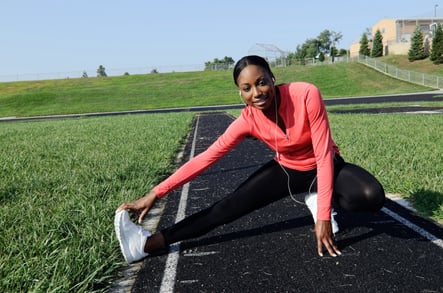 heard that exercise is good for health. The fitness industry has been growing significantly over the past decade. As of 2017, there were
heard that exercise is good for health. The fitness industry has been growing significantly over the past decade. As of 2017, there were ![GettyImages-627455550-[Converted]-new](https://www.nifs.org/hs-fs/hubfs/GettyImages-627455550-%5BConverted%5D-new.jpg?width=402&name=GettyImages-627455550-%5BConverted%5D-new.jpg)
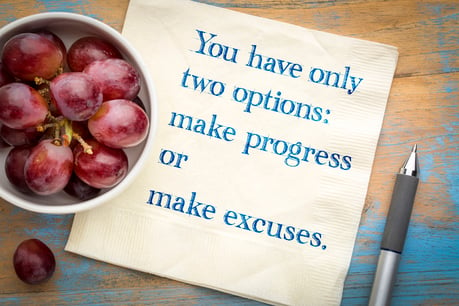 After the New Year, springtime is another time that motivates us to make a fresh start. When the weather finally starts to warm up and the breeze is blowing, we want to throw open the windows and let the rebirth all around us revitalize our homes and our spirits.
After the New Year, springtime is another time that motivates us to make a fresh start. When the weather finally starts to warm up and the breeze is blowing, we want to throw open the windows and let the rebirth all around us revitalize our homes and our spirits.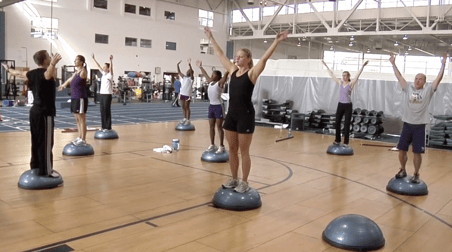 Imagine a tightrope walker, gracefully walking their path across their suspended highwire. An incredible amount of balance is required, along with stability and strength, to ensure that the performer maintains their position on the rope. Now think about balance as it applies to you and your profession or daily life. You might not even think about it, but you use balance every day. Things that you take for granted, such as walking down stairs, putting on a pair of pants, and getting out of your car require some level of balance, or else we would most likely take a tumble. Thankfully, there are exercises and routines designed to improve and train balance that transfer nicely to daily life.
Imagine a tightrope walker, gracefully walking their path across their suspended highwire. An incredible amount of balance is required, along with stability and strength, to ensure that the performer maintains their position on the rope. Now think about balance as it applies to you and your profession or daily life. You might not even think about it, but you use balance every day. Things that you take for granted, such as walking down stairs, putting on a pair of pants, and getting out of your car require some level of balance, or else we would most likely take a tumble. Thankfully, there are exercises and routines designed to improve and train balance that transfer nicely to daily life. The never-ending cold and dreary winter weather is coming to an end finally. After months of staying in and hibernating on chili, casseroles, soups, and stews, it’s time to break out the fresh and colorful foods! This is the perfect time of year to experiment with more fresh fruits and vegetables that are quick and easy and oh so good for you!
The never-ending cold and dreary winter weather is coming to an end finally. After months of staying in and hibernating on chili, casseroles, soups, and stews, it’s time to break out the fresh and colorful foods! This is the perfect time of year to experiment with more fresh fruits and vegetables that are quick and easy and oh so good for you!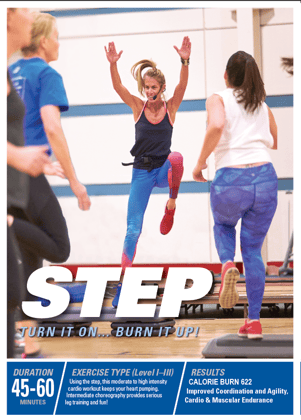
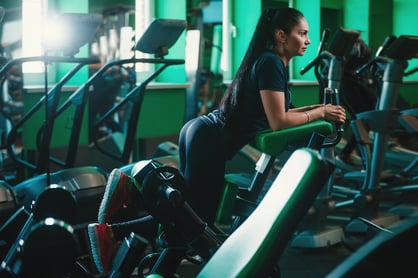 What is the most feared and most skipped gym day of the week? Nearly every person despises it, and few survive it. Yes, you guessed it. I am referring to the infamous “leg day.” However, even if you can endure training your legs, how beneficial is it if you aren’t training your hamstrings correctly, efficiently, and according to their full potential?
What is the most feared and most skipped gym day of the week? Nearly every person despises it, and few survive it. Yes, you guessed it. I am referring to the infamous “leg day.” However, even if you can endure training your legs, how beneficial is it if you aren’t training your hamstrings correctly, efficiently, and according to their full potential?